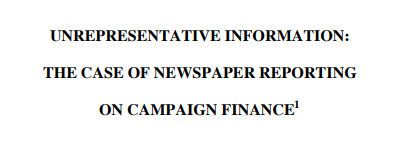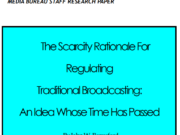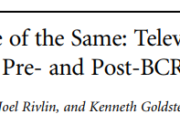This paper examines evidence of sampling or statistical bias in newspaper reporting on campaign finance. The authors compile all stories from the five largest circulation newspapers in the United States that mention a dollar amount for campaign expenditures, contributions, or receipts from 1996 to 2000, and compare these figures to those recorded by the Federal Election Commission. The average figures reported in newspapers exceed the analogous figures from the FEC by as much as eight fold. Press reports also focus excessively on corporate contributions and soft money, rather than on the more common types of donors – individual – and types of contributions – hard money. The authors further find that these biases are reflected in public perceptions of money in elections. Survey respondents overstate the amount of money raised and the share from different groups by roughly the amount found in newspapers, and better educated people (those most likely to read newspapers) showed the greatest discrepancy between their beliefs and the facts.














